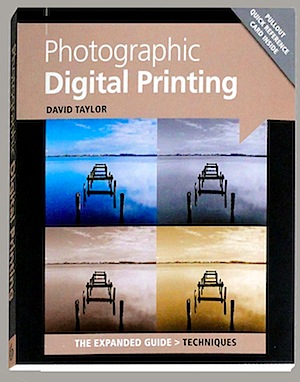 In my experience, personal printing is a declining art. Walk through any retail photo dept and you’ll see hordes of people sitting at digital print stations pumping out bundles of 6×4 inch prints from their precious memory sticks and CDs.
In my experience, personal printing is a declining art. Walk through any retail photo dept and you’ll see hordes of people sitting at digital print stations pumping out bundles of 6×4 inch prints from their precious memory sticks and CDs.
Many of these keen printers will be women, turning happy snap family digi shots into photo records, destined for albums.
The Photographic Digital Printing book will be of no use to them… after all, those auto digi printers do a fine job!
However, it’s the real, rusted on photographers who want quite a bit more from their printing efforts.
As author David Taylor says: ‘It used to be so simple. Once, there was little choice if you wanted a printer. Generally, the same manufacturer made the only printer available for a particular computer printer model. … Printers allow a photographer to control every aspect of image making, from the initial exposure through to the final print.’
Things have sure changed since then: the range of printer types has exploded for one thing. The range of media has similarly expanded, as has the ‘ink’ used.
Ink? Well, for starters there are colour laser printers at affordable prices. Possibly, the only brake on laser printers moving into photo printing further is their inability to use coated papers due to the laser’s heat.
Dye sublimation printers are another type that have positive aspects but, again, fall foul of a limited range of papers and size limits.
Inkjet printers are ubiquitous and are able to produce prints at relatively low cost onto an amazing range of papers and surfaces.
Inkjet printers are divided into two subsets: dye-based and pigmented. The book goes into considerable detail on each type, with descriptions about how ink is placed onto paper, the technology involved and their comparative benefits and disadvantages. This information should be of considerable benefit to new buyers tossing up on the pluses and minuses of each.
Other topics follow: computer to printer communication; printer makers; the various media you can print to. In this area, the range is truly amazing: paper in a wide variety of surfaces, weights and types. Then there is canvas media, transparent film and other surfaces.
On the topic of paper alone, the book spends 20 pages delving into the fibres used, weight, opacity, sizes, surfaces, finish, brightness and texture. Would you like to use Baryta paper, water coloured, calendared or resin coated paper? Perhaps your printing needs will be answered by using artisan papers made by such companies as Hahnemüle or Canson or St Cuthbert’s Mill?
If you have reached around page 50 in the book you will need to make a commitment to take the whole business seriously, commit yourself to the whole technology — or simply head back to your local photo print shop! It’s a serious game!
Strapped in? With David Taylor at the helm, let’s explore more topics: colour and calibration; colour channels; colour management; profiling; image preparation; bit depth; using JPEG or RAW files; understanding histograms.
There is much information about the role of Photoshop in print making. A great deal of this information will cross over and be of help in your original image capture. After all, it’s difficult to print an incorrectly exposed or post processed image. So the book moves into detailed descriptions on how to work with curves, layers, sharpening, etc.
In the closing chapters of the book we finally get to make a print! And even then the info keeps rolling!
How to store a print. How to mount a print. Book binding. Exhibiting. Black and white printing. And troubleshooting.
For me, the big surprise is that there is so much information in such a small book and information which is camera and printer non-specific — unlike some other publications which are dedicated to brand name printers.
An excellent book on the subject.
Author: D Taylor.
Publisher: Ammonite Press.
Distributor: Capricorn Link.
Size: 18x15x1cm. 192 pages.
ISBN: 978 1 90770 874 9.
Price: Get a price on Digital Printing (The Expanded Guides: Techniques) by (David Taylor) at Amazon (currently 24% off).
Post originally from: Digital Photography Tips.
Check out our more Photography Tips at Photography Tips for Beginners, Portrait Photography Tips and Wedding Photography Tips.
Photographic Digital Printing [REVIEW]

Digital Photography School





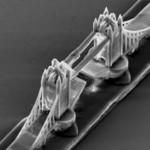
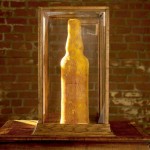







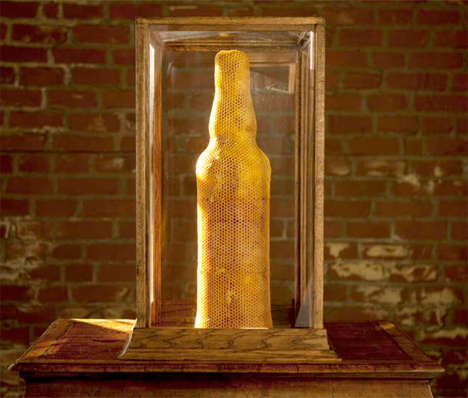
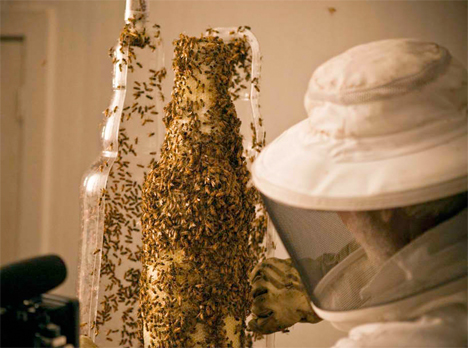
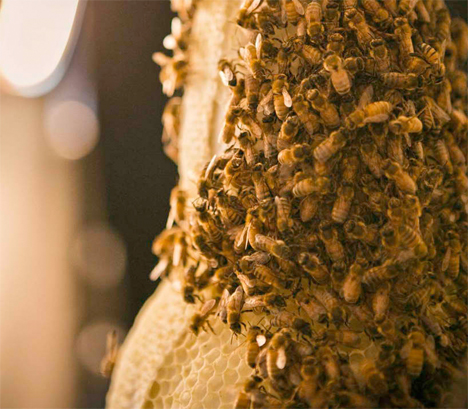
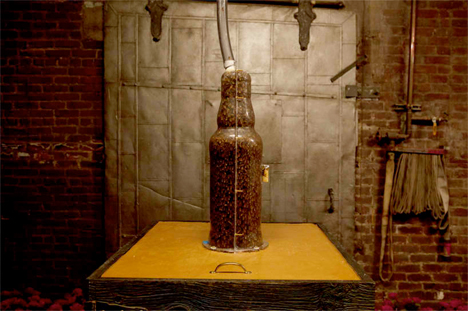





 In my experience, personal printing is a declining art. Walk through any retail photo dept and you’ll see hordes of people sitting at digital print stations pumping out bundles of 6×4 inch prints from their precious memory sticks and CDs.
In my experience, personal printing is a declining art. Walk through any retail photo dept and you’ll see hordes of people sitting at digital print stations pumping out bundles of 6×4 inch prints from their precious memory sticks and CDs. 


















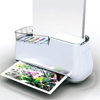
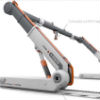
You must be logged in to post a comment.